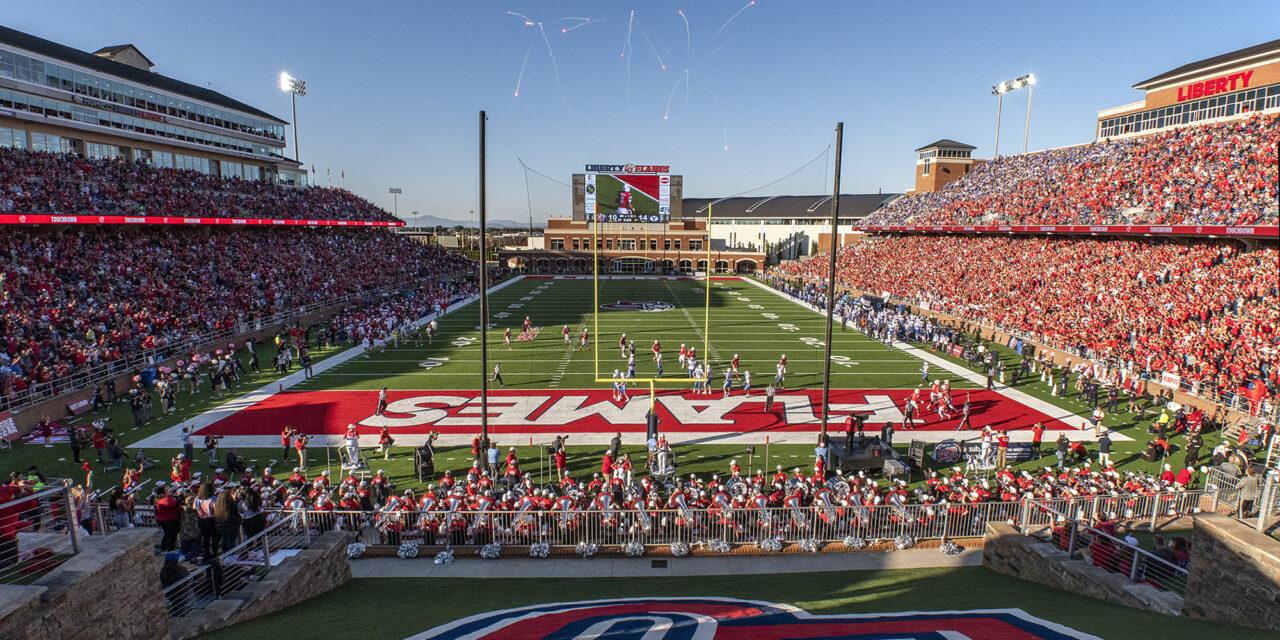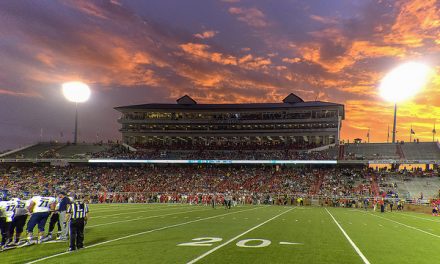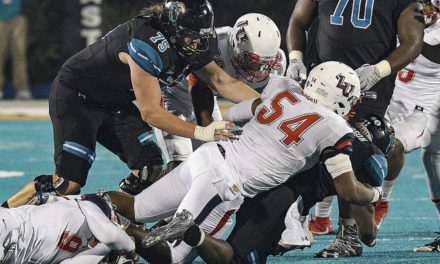The Flames have a new home. On July 1st, 2023, Liberty officially became a member of Conference USA, joining one of ten FBS conferences in college football.
This new chapter in program history comes with new conference foes, new rivalries, and new road venues for the Flames and their fanbase. From the mountains just across the Mexican border to the tropical climate of Miami, Florida, CUSA stadiums vary differently in both size and climate. With football season just around the corner, we take a look at Liberty’s new conference mates’ home stadiums.
UTEP – Sun Bowl
/cdn.vox-cdn.com/uploads/chorus_image/image/52130267/usa_today_9561707.0.jpeg)
The Sun Bowl is easily one of the most prestigious stadiums in the conference. The stadium sits at an elevation of 3,910 feet above sea level in El Paso, Texas on UTEP’s campus, overlooking the Mexican border. The stadium opened in 1963 and has the largest seating capacity in the conference, seating 51,500. The Sun Bowl (stadium) does not just host the Miners, but also the Sun Bowl (game). This historic bowl game dates back to 1936 and was moved to UTEP’s home stadium as soon as it opened in 1963. The Sun Bowl recently had renovations done to make the venue even more appealing. 502 outdoor club seats, 104 indoor club seats, four new suites, renovated restrooms, and concessions, along with other amenities were added to the Sun Bowl.
Western Kentucky – Houchens Industries L. T. Smith Stadium
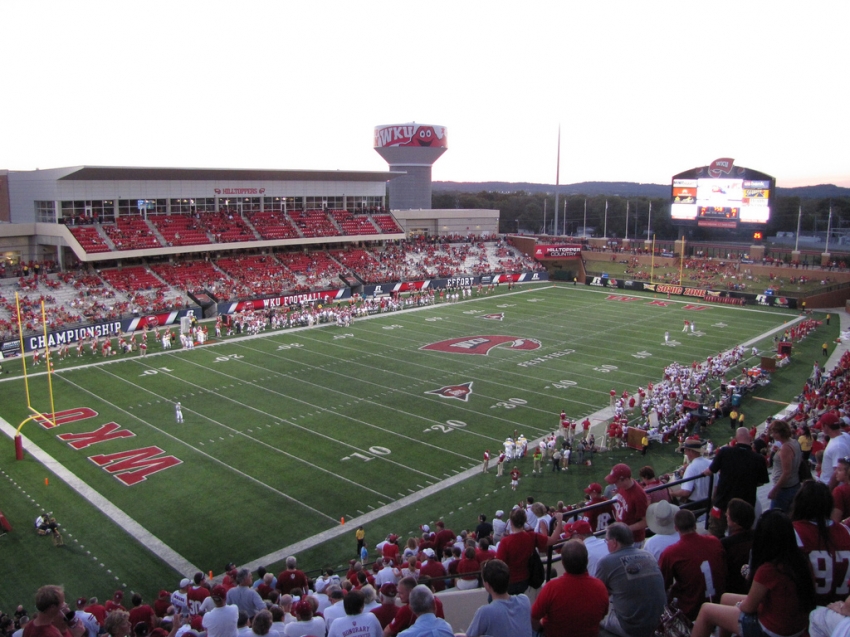
Unlike UTEP, Western Kentucky plays in one of the smaller FBS stadiums. While it only seats 23,776 fans, it has provided a raucous home environment for the Hilltoppers since 1968. Located in Bowling Green, Kentucky, the stadium underwent major renovations beginning in 2006, adding a “west side” of the stadium, training rooms, a weight room, and a berm, along with many other new additions. The stadium hosted the Conference USA Championship game in 2015 and 2016, becoming the first venue to ever host the CUSA Championship in back-to-back seasons. Both years resulted in a championship win for Western Kentucky.
Sam Houston State – Elliot T. Bowers Stadium

Elliot T. Bowers Stadium is the home of first year FBS program Sam Houston State. The Bearkats began playing in Bowers in 1986, which resides on the outskirts of Sam Houston’s campus in Huntsville, Texas. While the stadium only has a capacity of 14,000, Bowers Stadium boasted over 16,000 fans in 2007 to watch the Bearkats defeat Steve McNair and nationally ranked Alcorn State. Sam Houston installed brand new AstroTurf 3D3-60 in 2016, just a year after installing a state-of-the-art video board which was one of the largest video boards at the FCS level.
New Mexico State – Aggie Memorial Stadium

Aggie Memorial Stadium has hosted Aggie football since 1978. Located just off Interstate 25, Aggie Memorial Stadium provides fans with a nice view of the mountains in Las Cruces, New Mexico. The stadium has a capacity of 28,853 and games are played on synthetic turf. The stadium has a “berm” type structure and is named after former New Mexico State students that served in the armed forces. Aggie Memorial Stadium saw their largest crowd ever on September 26, 1998, when the Aggies defeated rival (now CUSA rival) UTEP. Thirteen out of the twenty largest crowds at Aggie Memorial Stadium have occurred at NMSU vs UTEP games.
Middle Tennessee State – Johnny “Red” Floyd Stadium

Home of the Blue Raiders since 1933, Floyd Stadium is the oldest venue in the conference. The 30,788-seat stadium includes sixteen indoor suites and thirty-four outdoor boxes. The stadium completed a $25 million renovation in 1997 as MTSU made the jump to the FBS. The university just broke ground in January on a $66 million Student-Athlete Performance Center that will be located at the north endzone of Floyd Stadium. The Blue Raiders boast a 307-129-13 record all-time in their home stadium.
Louisiana Tech – Joe Aillet Stadium

The Louisiana Tech Bulldogs have played in Joe Aillet Stadium since 1968. Known as “The Joe,” the stadium has gone through quite a few renovations since it opened in 1968. In 2009, a $2 million state-of-the-art video board was added and in 2015, the $20 million Davison Athletics Complex was built at the south end of the stadium. Just a year later, plans were announced for a $16.7 million press box and guest suite facility along with other stadium improvements. These facilities and improvements were completed by the 2017 home opener. The stadium holds 28,562 fans and the Bulldogs have a 174-74-2 record all-time at “The Joe,” and boast a 111-46 record at home since joining the FBS.
Jacksonville State – Burgess-Snow Field at JSU Stadium
JSU Stadium opened in 1947 and has expanded on three separate occasions, starting from a capacity of 8,500 to an eventual 24,000 in 2010. The 2010 season also marked the completion of a $47 million renovation that included a seven-story facility that included luxury skyboxes, coaches’ booths, broadcast facilities and much more. The bottom four floors of the facility have 400 dorm beds, acting as a housing facility. The Gamecocks are set to begin construction on a brand-new football complex soon which will include player lounges, suites, training rooms, and more. Ironically, the largest crowd JSU stadium has ever seen came in 2017 when Jacksonville State hosted Liberty. 23,944 fans came to see the Gamecocks host the Flames in what unfortunately resulted in a JSU victory.
FIU – FIU Stadium
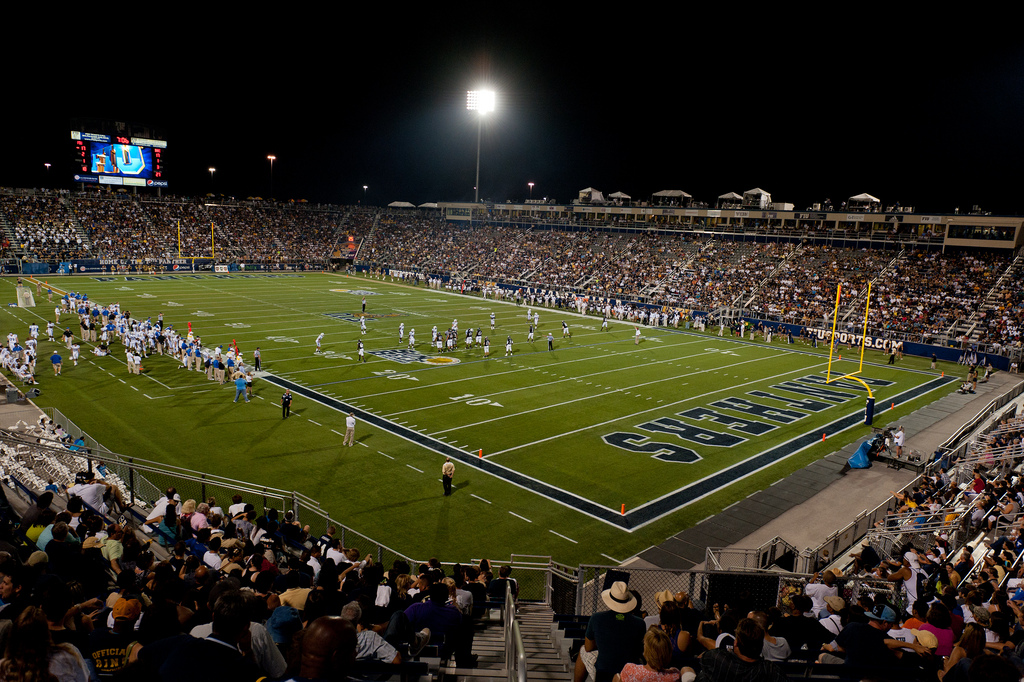
FIU Stadium opened in 1995, seven years before the Panthers fielded their first football team but was built with the intention of hosting FIU football. The stadium holds 20,000 fans and includes 18 suites and 1,500 club seats. FIU stadium also boasts a two-story 50,000-square-foot fieldhouse. The R. Kirk Landon Football Fieldhouse includes a theatre-style film room, offices, a training room, along with other amenities. The stadium saw its largest crowd ever against Duke in 2011, when 22,682 fans witnessed a narrow Blue Devils victory over FIU. While FIU Stadium hosts the Panthers in football, it is also the home field of Miami FC, a professional USL soccer team.

